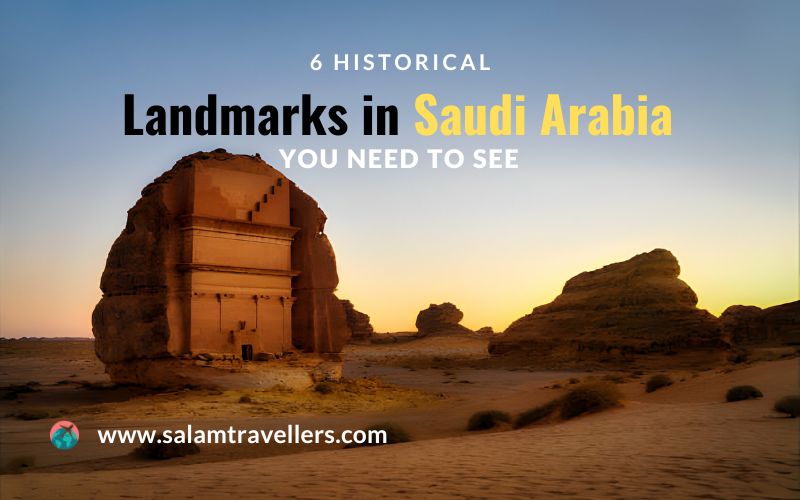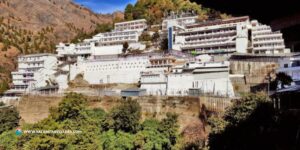Saudi Arabia is famous for its multiple tourist attractions and various developmental projects. The high mountains and deserts have a unique charm for adventure seekers. This kingdom is in the middle of the Arabian Peninsula and is the house of Islam. Its identity is derived primarily from two Islamic cities, Mecca and Madina. These two cities have numerous historical and spiritual sites for visitors. Both cities are the holiest for Muslims worldwide.
Tourists are attracted to this kingdom for exploring the region’s history. The Red Sea coastline of Saudi Arabia provides a getaway for beach lovers. This state has something for all types of travelers. Previously, it was a desert, but now, Saudi Arabia has become a modern landscape. Still, the country has preserved its heritage at historical sites.
Important Historical Landmarks in Saudi Arabia
Some important historical landmarks in Saudi Arabia are Madain Saleh, the ancient city of Diriyah, the Hijaz Railway Museum, and Jubbah Hail. Visiting these places, we see the rich history of Arabs and the traditions of different tribes. These attractions represent the region’s rapid development and economic growth.
1. Ancient Sites in Saudi Arabia
Saudi Arabia is full of religious heritage. The ancient sites have all types of interests. History buffs can explore the archaeological spots. This kingdom’s historical cities and religious places also have a thousand-year history. A tour of these sites reveals the lives of people. Religious sites are the most significant among other historical attractions. Below are some enlisted historical landmarks in Saudi Arabia. Each site has its own story.
The Kabah
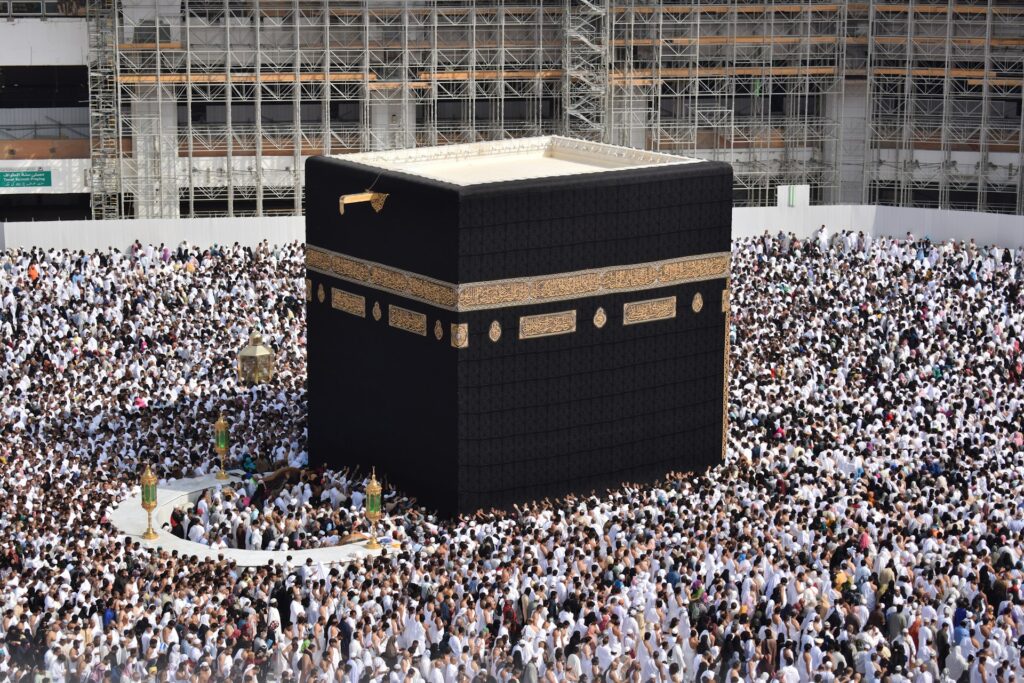
The Kaaba has historical significance for Muslims as the holiest site in Islam. Prophet Ibrahim and his son Ismail re-built this ancient worship house almost 5000 years ago. In pre-Islamic times, it was a sanctuary for Arabs and housed idols of pagan gods. Prophet Muhammad cleansed the Kaaba of idols upon his return to Mecca, returning it to monotheism.
The Kaaba became the focal point of Muslim worship and pilgrimage (Hajj) after 624 CE. Muslims pray facing the Kaaba (Qibla) five times a day. The building itself has been modified throughout history, including the addition of the kiswa (covering) and the gold door.
Also read: Al Taif: The City of Mountains, Saudi Arabia
Masjid-e-Nabwi
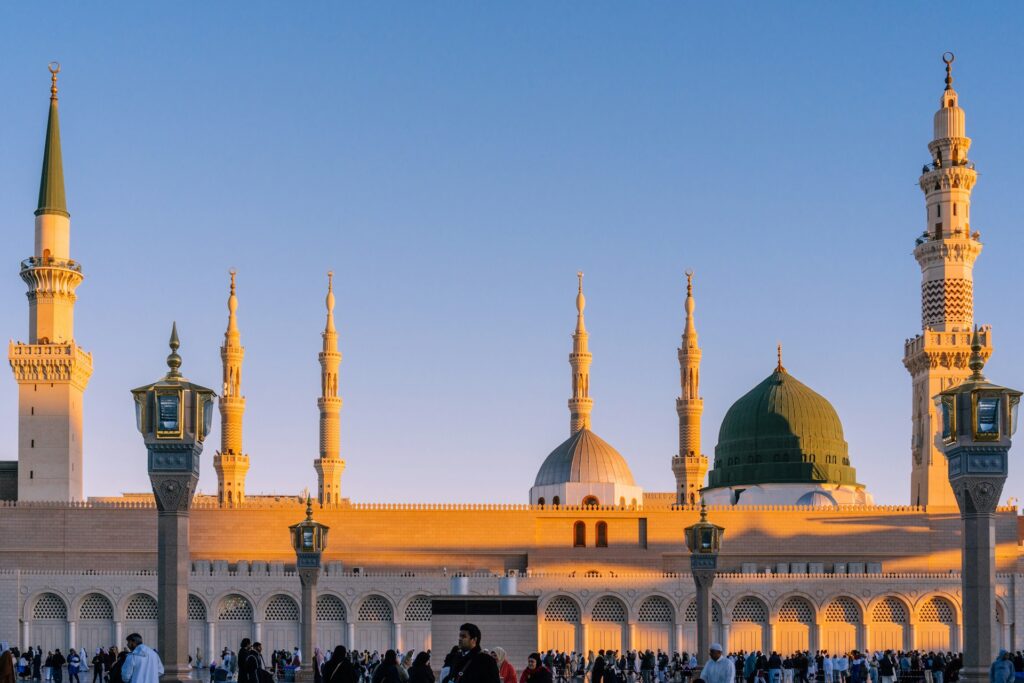
Built by Prophet Muhammad himself in 622 AD, it’s the second holiest site in Islam after the Great Mosque (Masjid Al-Haram) in Makkah. It functioned as more than just a mosque. It served as a community center, a court of law, and a spiritual school during the early Islamic era. The mosque houses the tomb of Prophet Muhammad, making it a pilgrimage destination for Muslims visiting Madinah.
Masjid-e-Nabwi played a pivotal role in the development of Islam and continues to be a sacred and important place for Muslims worldwide. Throughout history, the mosque has been expanded and renovated by various Islamic rulers, reflecting the architectural and artistic trends of their times. This makes it a significant landmark in Islamic history.
Jubbah Rock Art Site
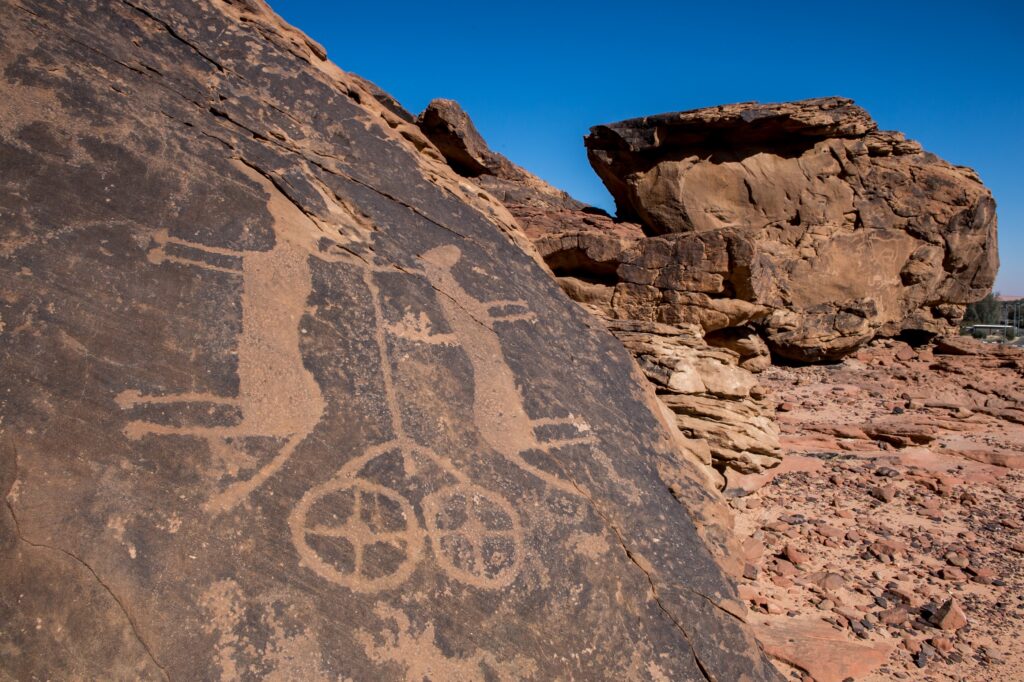
This rock art site is in northern Saudi Arabia. This archaeological site is vital for rock carving. Jubbah Rock art has a history spanning 10,000 years. It shows different pictures of different animals. Humans used these animals for their own living purposes. The site has also been identified as a UNESCO World Heritage Site because of its historical importance.
Shuwaymis
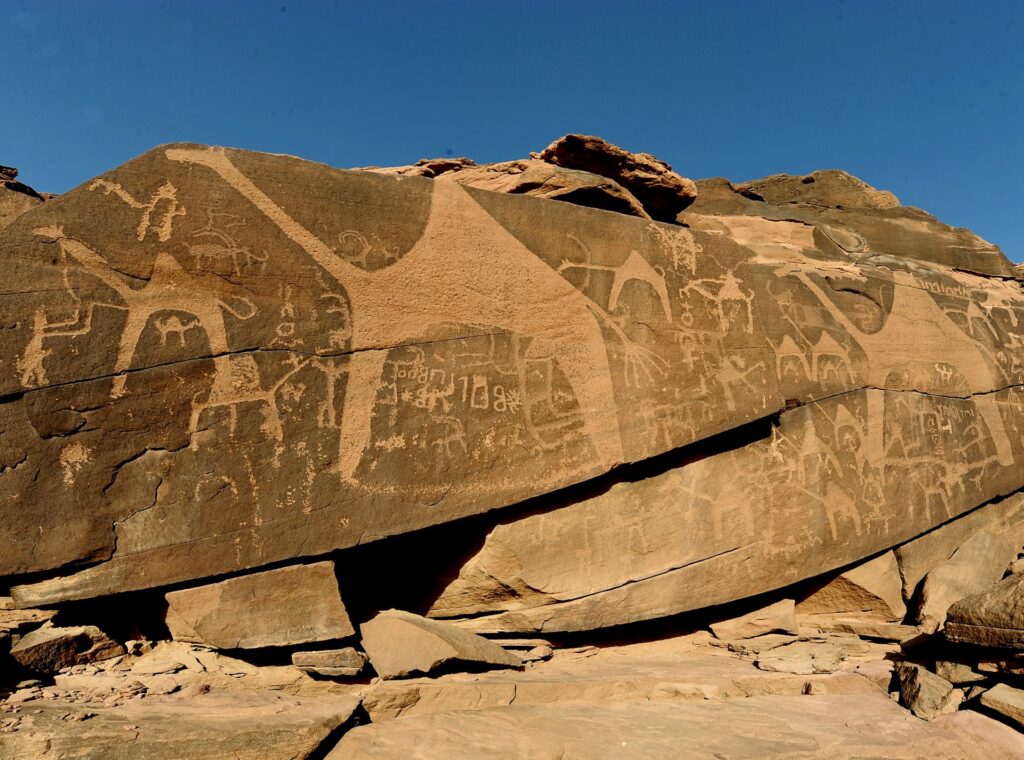
Shuwaymis is another renowned rock art site in northwestern Saudi Arabia. This popular art spot is similar to the Jubbah Rock site. The inscriptions on rocks are related to the Neolithic period. Old people have made these sites over thousands of years. These points provide valuable insights into the lives of ancient people. We come to know their beliefs and interactions with the environment.
Al-Rabadha
Al-Rabadha is an architectural site in Western Arabia. This attraction depicts the history and culture of Saudi Arabia. The site has well-constructed houses with large walls and watchtowers. There are 13 rooms on this site, and every room has a door that leads to the middle courtyard. A museum and tourism section is also dedicated to Al-Rabadha.
2. Exploring the Historical Treasures of Saudi Arabia
Saudi Arabia has a striking treasure trove about its past. This treasure has expanded over the centuries and has attracted visitors worldwide. From the birth of Islam to different historical periods, Saudi Arabia has shown dignity for its past. These places also provide an understanding of cultural identity.
Al-Turaif District in Diriyah
This district gives an original picture of the lifestyle of the Saudi royal family. The Diriyah district is remarkable for its extraordinary architecture. The primary materials are mud, stones, and bricks. Visitors explore the history of the first Saudi state in this district.
Al-Ahsa Oasis
This place is one of the largest oases in the world. Its settlements are in the Eastern Province of Saudi Arabia. The site contained orchards of palm, farms, and canals. The oasis is well known for its agricultural activities. Its specialty is the cultivation of dates. This cultivation is the central part of the economy of Arabia. The site also fascinates agriculture lovers. They can learn the farming techniques of desert land during their visit to this oasis.
Historic Jeddah
It is on the eastern shore of the Red Sea. Old Jeddah is a gateway for the pilgrims who come by sea route to perform Hajj or Umrah. This place has historical significance due to its unique architecture. Visitors can explore the past with a blend of the present in Arabia on this site.
Also read: Things to do in Riyadh: A Guide to Saudi Capital’s Attraction
3. Saudi Arabia’s UNESCO World Heritage Sites
Heritage sites in Saudi Arabia provide knowledge about old traditions. These sites show the cultural and social development of this kingdom. Here are some incredible examples of Saudi Arabia’s UNESCO World Heritage Sites.
Hegra Archaeological Site
This site is also known as Al-Hijar or Madin Salih. The location is a UNESCO World Heritage Site in the Al-Ula region of Saudi Arabia, and it was added to the list in 2002. It is well known due to its archaeological history. This landmark is a business hub for Arabian economic activities. It is prominent due to the Nabatean tombs. These tombs present stone cliffs and a model of Arabian architecture.
Hima Cultural Area
This cultural area shows the practices of Arabs that were performed for centuries. It is a platform to save natural resources such as greenlands and water. It also protects wildlife animals according to specific rules and laws. The Hima cultural area aims to give a long life to these resources for humanity.
Rock Art in the Hail Region
Located in a desert setting, this property consists of two parts. Jabel Umm Sinman at Jubbah and Jabal al-Manjor. Raat at Shuwaymis is also part of it. The ancestors of today’s Arab populations have left traces in numerous petroglyphs. Inscriptions on the rock also show their past. The rocky wadi escarpment, now covered in sand, is formed by Jabal al-Manjor and Raat. They show numerous representations of human and animal figures. These figures cover 10,000 years of history.
4. Hidden historical gems of Saudi Arabia
These hidden historical places are fascinating for having the deep history of Arabia. From these places, the featured sites are The Edge of the World, Jeddah’s Old Town, and the Farasan Islands. These points are in a crowd-free location and are a lovely visitor source. Visitors feel a peaceful and calm environment during their visit. The Edge of the World is famous for its incredible view. The Farasan Islands present tranquil surroundings to nature lovers. Adventure seekers can entertain themselves with beach activities.
5. Journey Through Saudi Arabia’s Past
A journey through the historical past of Saudi Arabia shows an unforgettable experience. It reveals a blend of civilization and history. It also takes us into the modern era of this state.
Al-Balad
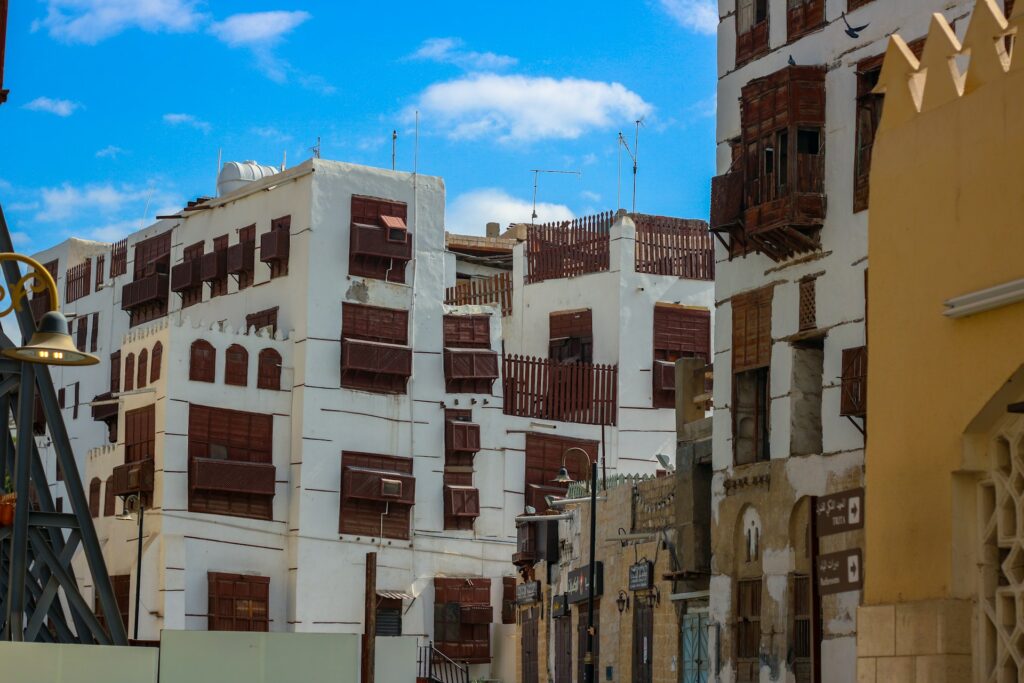
Al-Balad presents Saudi Arabia’s history through its mud-made market. The crafted work and street performers present the culture of Saudi Arabia. In this UNESCO World Heritage Site, tourists can visit the oldest school in Saudi Arabia. Because of its preserved history, this city is also known as Old Jeddah. This tour will take the explorers back into the annals of Jaddah.
Al-Ula Heritage Village
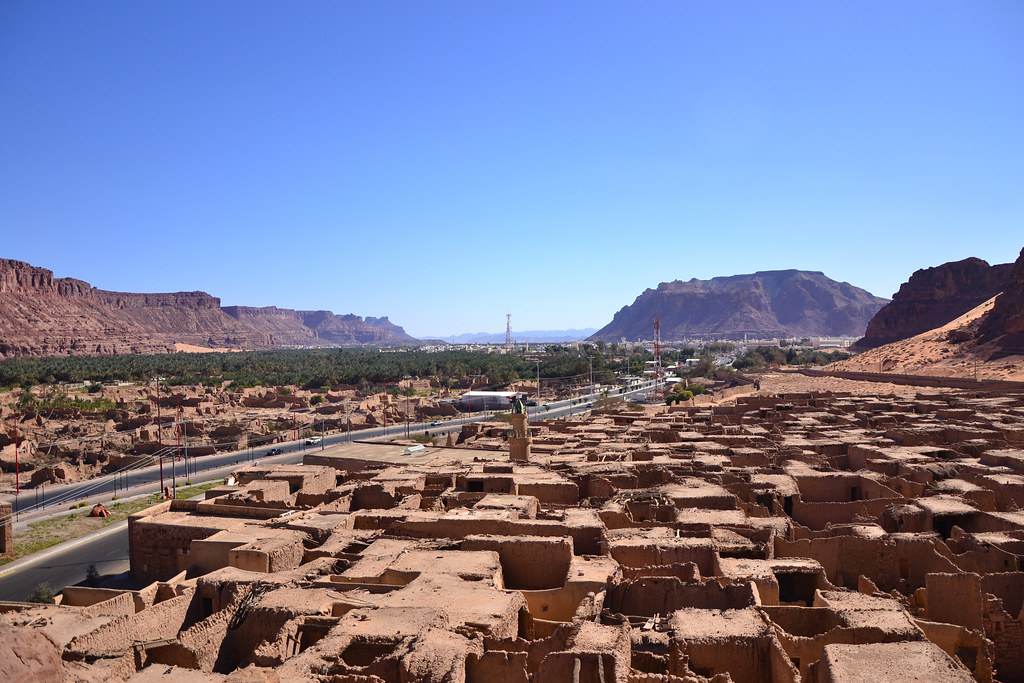
The Al-Ula Heritage Village in Saudi Arabia shows cultural heritage through mud-brick houses. This village presents Nabatean and Roman architectural wonders in particular. This style dates back to the history of Saudi Arabia. It is a blend of Bedouin traditions and culture that invites visitors on a journey through time.
Al Rahma Mosque
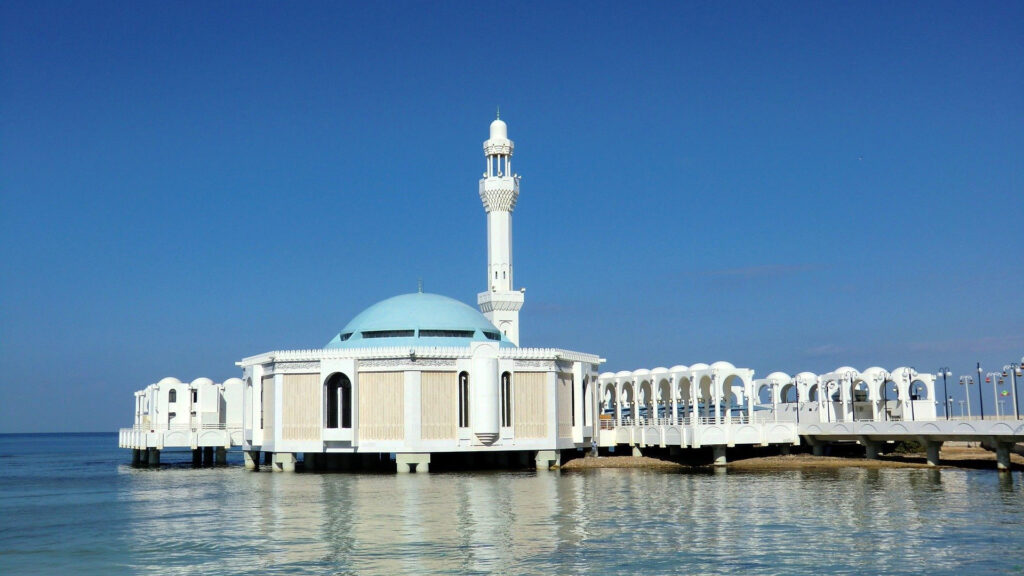
This mosque describes the past of Jeddah. It depicts Saudi architectural styles. It is also called Al Zahra. The mosque is open all the time during the whole week for all people. Al Rahma Mosque reflects the religious generation of Saudi Arabia. This place of calm and spiritual integrity attracts visitors to the mosque.
6. What are some lesser-known historical sites in Saudi Arabia?
Saudi Arabia has very few offbeat sites. These sites also have some historical features for visitors. The past touch of these places provokes the interest of history lovers.
Al-Faw Village
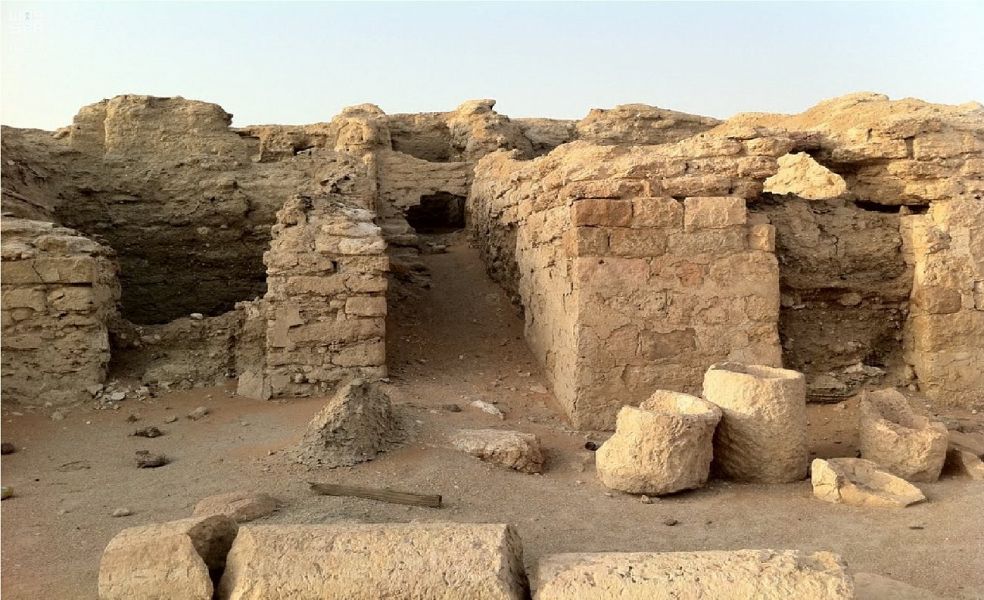
This village is in the Eastern Province of Saudi Arabia. The place will allow you to observe the ancient wells and houses. Houses are made of mud and stones, and the village streets are narrow. Saudi Arabia has a vision to transform this village into a museum. In this way, they can preserve the rocks and caves being demolished by climate change.
Rijal Almaa
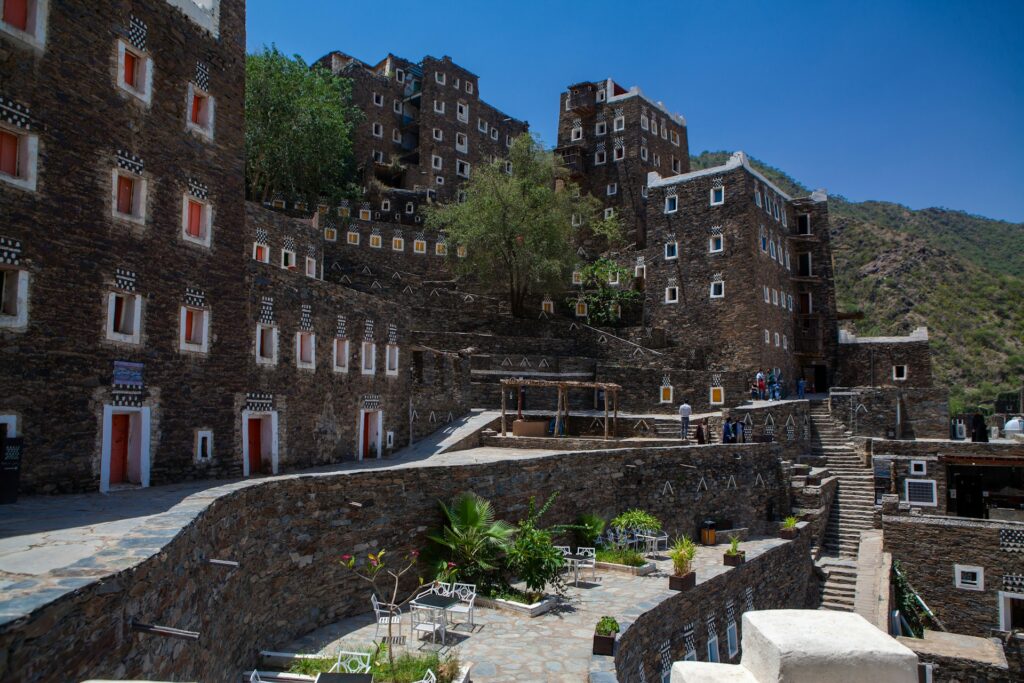
Rijal is an ancient village in Rijal Alma Province, Saudi Arabia. The village contains 60 palaces with unique designs. The significant elements used in architecture are stones and mud. The Saudi Commission for Tourism created a rehabilitation program for this village. The public and private sectors also added funds for this program.
Where can I find the oldest artifacts in Saudi Arabia?
Several locations house ancient Saudi Arabian artifacts. These artifacts present variations in the cultural heritage of Saudi Arabia. Such as:
Al Masmak Fortress
Al Masmak Fortress is in the heart of Riyadh and is significant due to its style. Its rigid walls and square towers symbolize the kingdom’s founding and resilience. The fortress shows the history of Saudi Arabia for years. This place provides a glimpse of a rich ancient history.
Al-Magar Civilization Site
The Al-Magar Civilization Site is near Abha in the Asir region. Al-Magar is one of the first cultures in the world to widely domesticate animals. Horses were the essential animals during the Neolithic period. This site shows the history and culture of Saudi Arabia and is a source of fascination for visitors.
How can I learn more about Saudi Arabia’s ancient civilizations?
Saudi Arabia has good opportunities for education in different old and new universities and colleges. King Abdul Aziz University and King Saud University are the best examples. Some centers present a historical study of Saudi Arabia.
King Fahd National Library was founded in 1968 in Arabia and has a place in Arabia’s national library. This library has a vast collection of cultural and historical books. Literature stock about the state is also added to this library. This educational center provides an excellent opportunity for book lovers and researchers.
Final Analysis
This is how and where you can explore the historical landmarks in Saudi Arabia. Before visiting there, make sure to do good research. Be familiar with each province’s rules and laws. Saudi Arabia is a sacred land. The visitors should be well aware of the traditions and values during their visit. This knowledge will save them from any inconvenience. The language of the Arabs is mainly Arabic. Therefore, tourists must learn basic sentences in Arabic under local instructions.
Stay tuned for more adventure guides from Salam Travellers.

